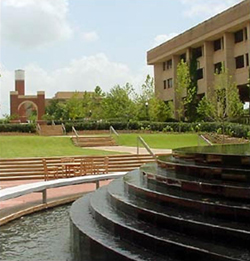Accredited by the Commission on Accreditation of Medical Physics Educational Programs (CAMPEP) in 2012
 The Clinical Medical Physics Residency Program in the department of Radiation Oncology of the University of Oklahoma Health Sciences Center is geared towards the training of individuals to be able to achieve the American Board of Radiology certification and therefore, practice independently as a certified therapeutic radiologic physicist in the Department of Radiation Oncology.
The Clinical Medical Physics Residency Program in the department of Radiation Oncology of the University of Oklahoma Health Sciences Center is geared towards the training of individuals to be able to achieve the American Board of Radiology certification and therefore, practice independently as a certified therapeutic radiologic physicist in the Department of Radiation Oncology.
The residency program is 24 months in length. It includes 8 clinical rotations, attendance to the department chart rounds and journal club seminars, didactic courses, recommended readings, written report assignments, research and oral examinations.
The training takes place under the close supervisions of experienced therapeutic radiologic physicists. The program emphasizes all areas of clinical training and experience that are required from a therapeutic radiologic physicist to be able to practice in a state-of-the-art treatment facility, and to manage at least a single accelerator community-based free-standing facility.
The Medical Physics residents receive clinical training through their participation in
- Monthly and Annual quality assurances on the linear accelerators
- IMRT quality assurance measurements with film and ionization chambers, and Mapcheck
- Electron cutout measurements
- Post-planning and weekly chart review
- High Dose Rate (HDR) and Low Dose Rate (LDR) brachytherapy planning, quality assurance, and other supports
- Special procedures that include
- Total Body Irradiation (TBI)
- 4DCT planning, respiratory gated treatment and Image Guided Radiotherapy (IGRT)
- Stereotactic Radio Surgery (SRS) with Gamma Knife, Trilogy/BrainLAB systems, and Varian TrueBeam STx
- Proton therapy
The progression of the resident through these clinical responsibilities is evaluated and discussed with the resident during quarterly reviews with the program director.
Evaluation
Clinical competency is evaluated periodically through rotation evaluations and receives a satisfactory or unsatisfactory grade at the end of every rotation. An oral exam is administered at the end of every two rotations. All rotations and oral exams must be passed to obtain a certificate of completion issued by the Department of Radiation Oncology.
Career Development
We have an excellent team environment, outstanding faculty & staff, and a large patient population at the University of Oklahoma Health Sciences Center and Peggy and Charles Stephenson Oklahoma Cancer Center. In this environment, the resident acquires experience with all aspects of clinical therapeutic medical physics in a Cancer Center with a high level of sophistication. The department is equipped with "cutting edge" technology to provide the most advanced radiation therapy available with the latest Varian treatment delivery technology, TrueBeam STx, two 2100 EX LINACS, and one Trilogy machine, all equipped with the gating respiratory position management (RPM) from Varian and megavoltage cone beam CT, a compact single room proton therapy machine from the Still River System, a 3T GE MRI scanner, a GE PET/CT scanner with both CT and PET gating, a GE LightSpeed CT Wide Board Simulator, and an active and diverse brachytherapy program that utilizes an HDR Nucletron Microselectron, Oncentra planning, PLATO for Nucletron, and Nucletron NPS, and a Gamma Knife Model C. The treatment planning softwares in use for accelerator based patients are Varian Eclipse and BrainLab iPlan. We use VariSeed for prostate seed implant.
Involvement in physics and clinical research, participation in national medical physics or radiation oncology meetings and journal publication are encouraged.
Number of Residents in Program
The Clinical Medical Physics Residency in the Department of Radiation Oncology at the University of Oklahoma Health Sciences Center sustains four residents in the program. There is a shortage of trained medical physicists nationwide; therefore, a graduate from our program will likely find employment opportunities soon after their training.
Faculty
The faculty involved in the Medical Physics Residency program includes PhD and MS level medical physicists, who collectively have a wealth of experience in every aspect of clinical radiation oncology medical physics. Faculty members also take lead roles in physics and clinical research and professional activities as demonstrated through peer reviewed publications, leadership in national organizations of Medical Physics (ACMP and AAPM among others).
Advisors and Mentors
The resident is assigned a faculty advisor and numerous mentors throughout this residency.